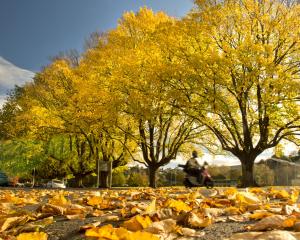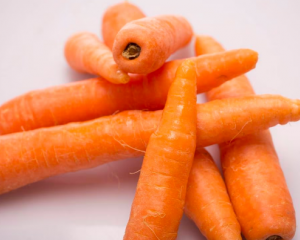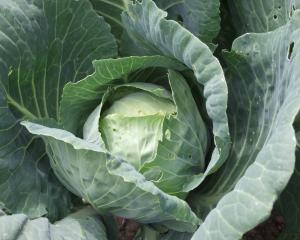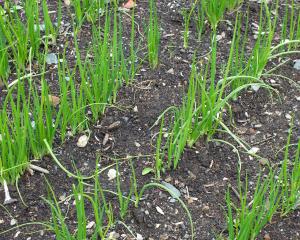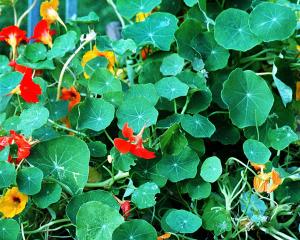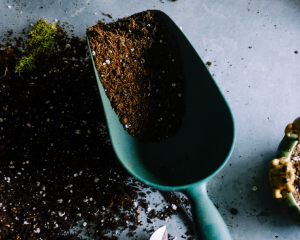Vegetables
In all but the coolest areas, radishes sown now will not thrive, tending to bolt to seed, even when the soil is kept moist, and those that do mature will be unacceptably sharp in flavour.
To add a little bite to salads, use nasturtium leaves and flowers, or grow some mustard streaks (Brassica juncea), which grow very rapidly and if to be eaten fresh are best young. Older plants can be used in stir-fry mixes.
Onion plants can have their tops bent over to assist bulb swelling. Crops sown in autumn will be almost ready for pulling. If harvested in hot, settled weather, they should be well-ripened and suitable for long storage.
Thick-stemmed bulbs will probably not keep well, so keep them aside for immediate use.
Liquid manure helps most crops. Make your own by tying a sack filled with sheep, horse, cow or poultry manure and suspending it in water for a few days. One kilogram of fresh manure to five litres of water is a suitable mixture. Excellent liquid manure can also be made with seaweed and is good for silverbeet, asparagus and cabbages.
Nitrate of soda and sulphate of ammonia (2Tbsp to 20 litres of water) promotes leafy growth in salad crops and any winter greens not growing as fast as they should.
Early potatoes can be lifted as the foliage yellows. Once potatoes are well matured, a combination of rain and warm soil could prompt new growth, spoiling the crops quality and storage properties.
Stake Brussels sprouts in exposed positions to prevent them twisting in the wind.
Spring cabbages are best when harvested early. Make one sowing at the end of January and another two weeks later. Grow in a seed tray or make a seed bed in a sheltered spot in semi-shade. Enrich the soil with some fine compost. Sow seed thinly in 50mm-deep drills and cover firmly. Transplant the seedlings when big enough to handle.
Cabbage aphis and white butterfly caterpillars go on the attack at this time of year. Protect seedlings with derris dust or spray with soapy water.
Flowers
The Madonna or true Christmas lily (Lilium candidum), will have finished flowering. Cut the old flower stems off at ground level and destroy to prevent the spread of botrytis.
Unlike almost all other lilies, L. candidum has no resting period. Fresh growth develops from the bulbs as soon as the flowering period is over, so if bulbs are to be divided or shifted, the work is best done now. Also unlike other lilies, the bulb should not be covered but the top third left above the ground. They like hot, dry spots and will tolerate some lime.
Multiply all lily bulbs by detaching scales and inserting them point upwards in boxes of sandy soil with the base of each scale just below the surface. Keep the boxes moist and plant the scales out when they have rooted. Plants propagated this way should flower in the second season.
Violas and pansies may be looking straggly and producing smaller flowers. Cut them back to new growth just above the ground and they will spring away.
Tulips and hyacinths can be lifted and cleaned when the tops have died down. Place the bulbs in shallow trays in a dry, cool, airy place. Never expose them to full sunshine. Anemones and ranunculuses can be lifted and stored for a month or two, until planting space is available. For winter blooms, plant anemone bulbs now in a warm place.
Like all bulbs, narcissi, crocuses and snowdrops suffer if kept out of the soil for any length of time. Lift only when overcrowding makes it necessary and replant without delay.
Fruit
Strawberry plants can be increased readily from the rooted runners the plants are now producing. Use only the strongest on any vine and after it has established roots, set it out in rich soil in early March. This summer propagation allows the plant to develop before cold weather sets in and bear a fruit crop next summer. If planting is delayed until winter or spring, no fruit should be allowed to develop in the first season.
Being of woodland origin, strawberries like plenty of compost, leaf mould and well-rotted manure. Superphosphate applied when planting will supply the phosphates important to full growth. Do not use lime, as strawberries prefer a slightly acid soil.


